After early breakfast in the hotel, drive to the airport for flight to onward destination.
from 0 review
11 Days 10 Nights
Daily Tour
Unlimited
Any Preferred Language
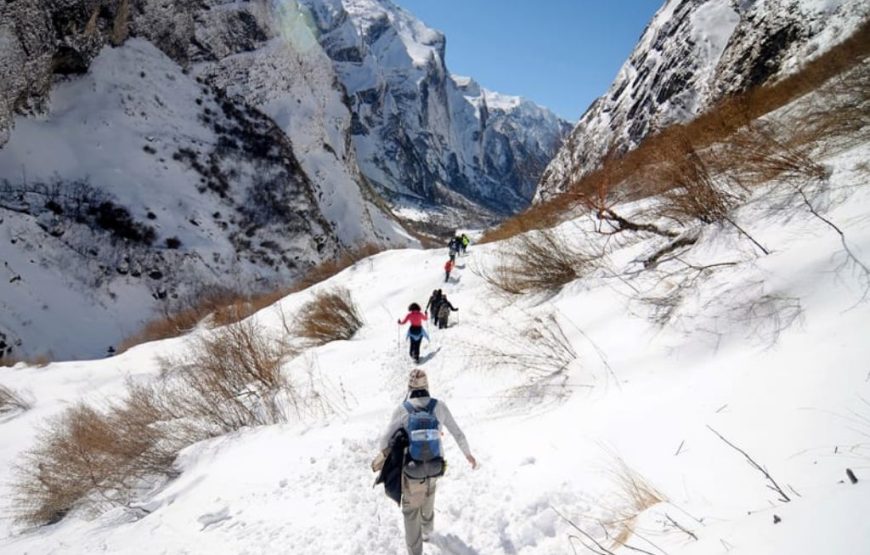
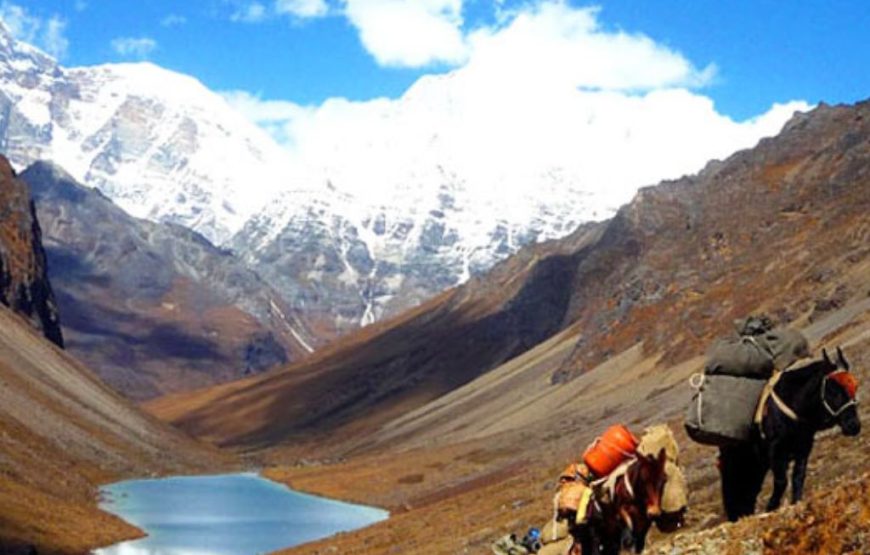
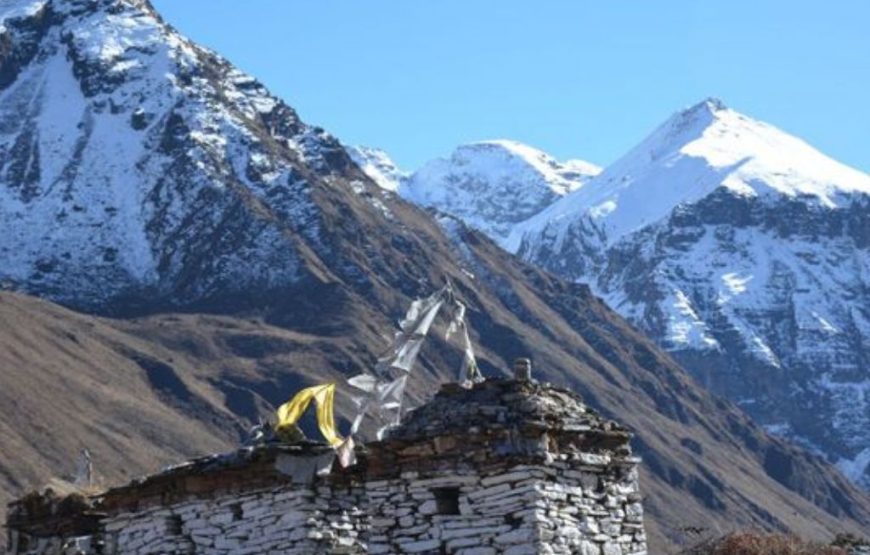
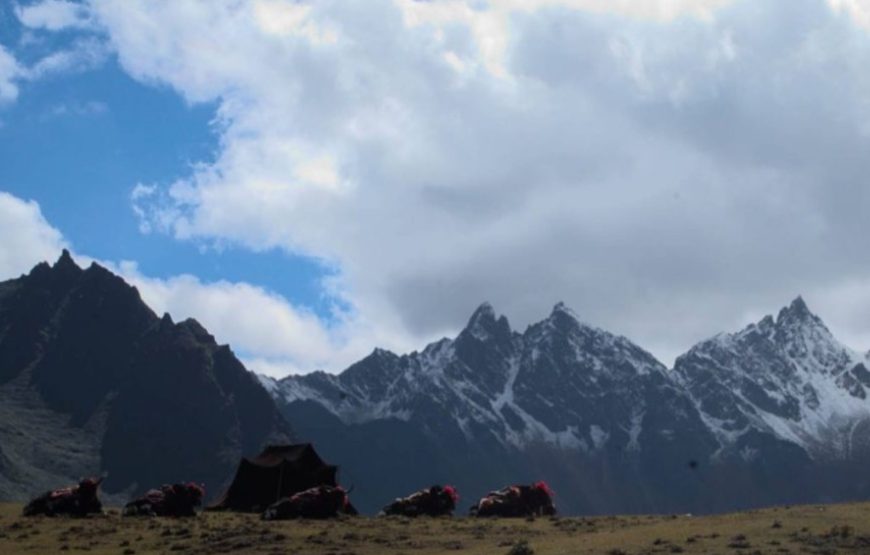
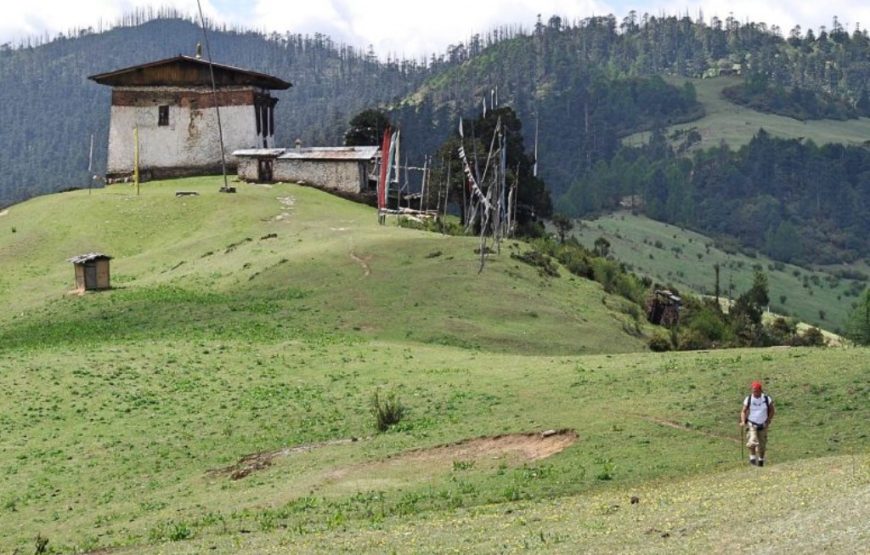
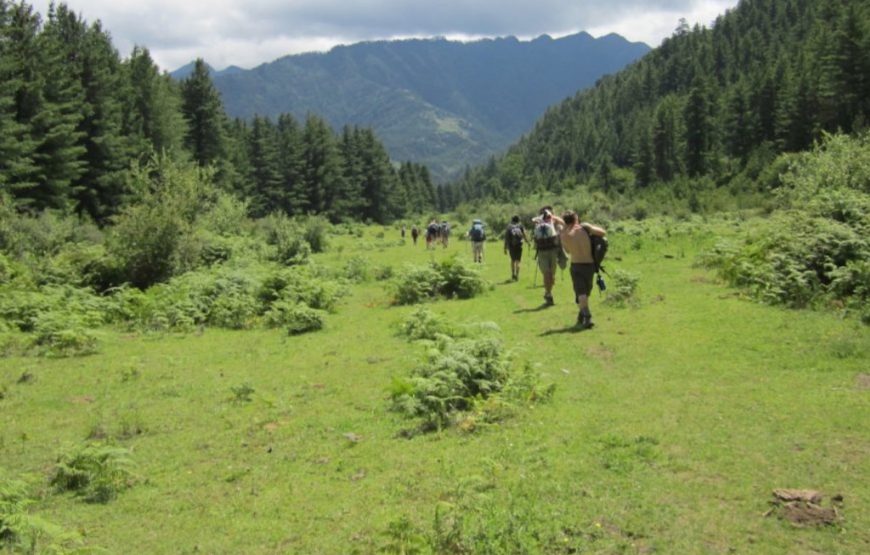
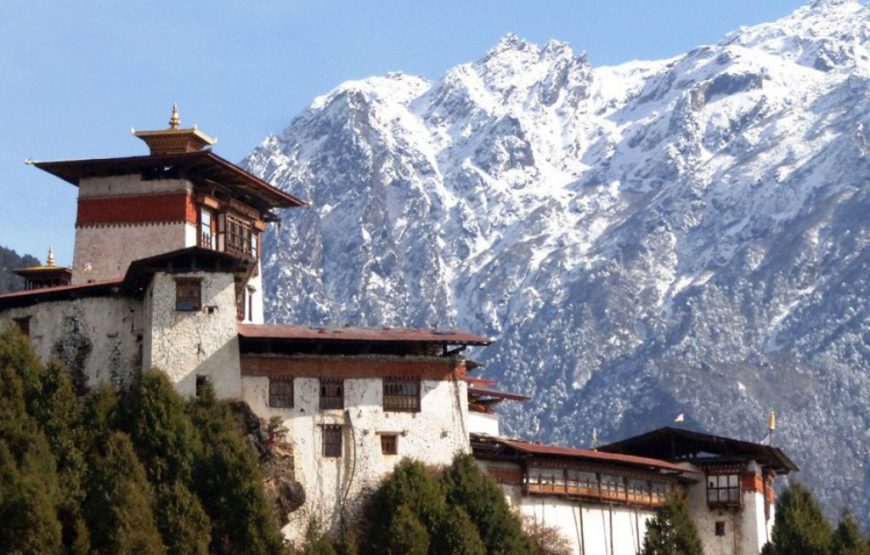
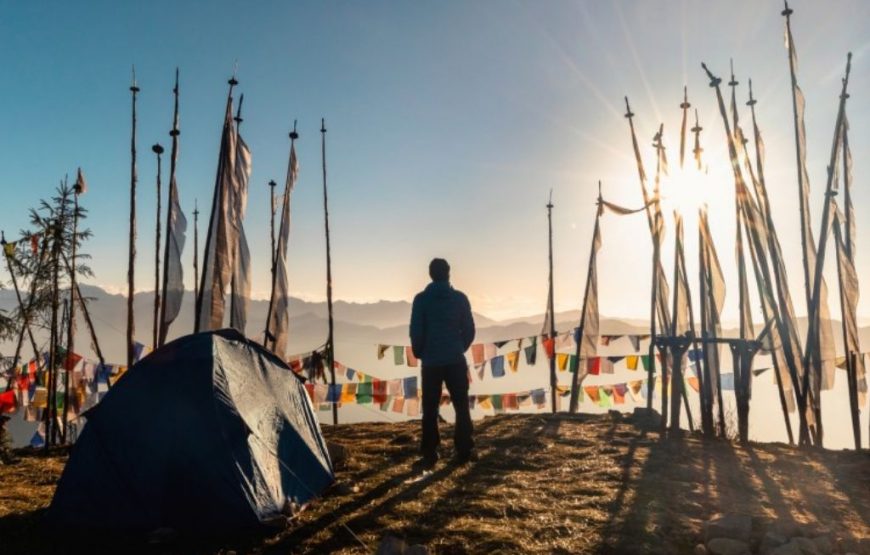
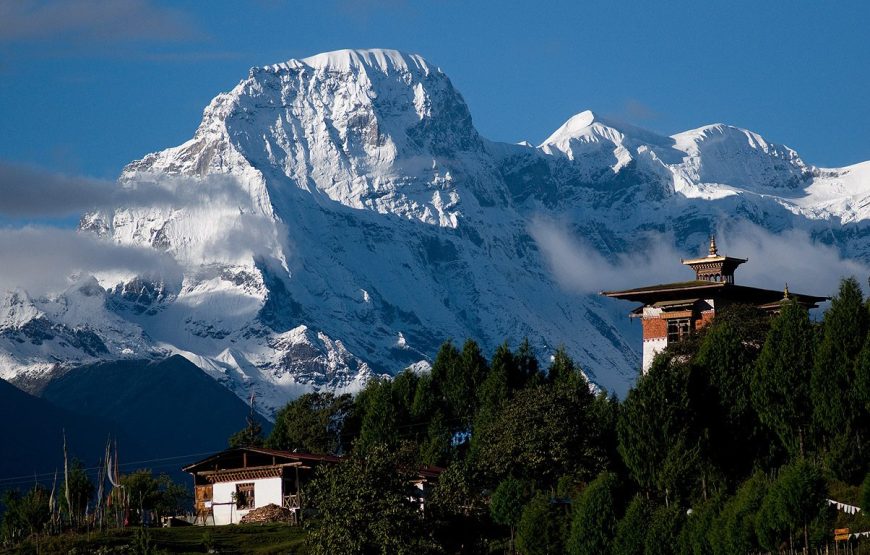
This is a short five-day trek, which leads from Paro to Thimphu or vice versa, crossing the chain of mountains that separates the two valleys. Although the route is sparsely inhabited, there are wonderful lakes teeming with fish and the area is famous for its spectacular rhododendron forests, which bloom in May. In the clear weather of late autumn and winter there are great views of the Himalayas.
On arrival at Paro airport, you will be met by your Etho Metho representative, and transferred to your Paro hotel. Overnight at the hotel in Paro.
Drive northwest up the valley to Drukgyel Dzong, built in 1646 by Shabdrung Ngawang Namgyal to commemorate his victory over the Tibetan invaders. Though largely destroyed by fire in 1951, its towering walls are still an imposing sight. On a clear day there is a splendid view of Mt. Jomolhari from the approach road to Drukgyel Dzong. Visit one of the typical village houses clustered near the dzong. Then visit Kyichu Lhakhang, one of the oldest and most sacred shrines of Bhutan. In the afternoon visit Ta Dzong, once a fortified lookout tower and now the National Museum. Then walk down the hillside trail to visit Rinpung Dzong (Paro Dzong), “the fortress of the heap of jewels”. Overnight at the hotel in Paro.
8km, 3 hours
Today is a short trekking day. The journey starts with a short climb up to Jele Dzong. The trek trail ascends gradually up to the camp, and if the weather is clear Paro valley can be seen with snow-capped mountains behind. Above the camp is Jele-la pass (3,400m) and Jele Dzong (mostly in ruins). There is also a lhakhang containing a statue of Buddha Sakyamuni. Overnight camp.
10km, 3-4 hours
Begin with a one and a half hour climb and then ascend more gradually upwards. The trail takes you through thick alpine forests and rhododendrons. You will have fine views of Jomolhari and other snow capped peaks if the weather is right, and you may hear some monal pheasants calling during the day. You may see yak herders around your campsite. Overnight camp.
11km, 4 hours
The trail follows the ridge, and on a clear day the views of the mountains and valley are sensational. You will enjoy a great view of Jichu Drake (6,989m), the peak representing the protective deity of Paro. Our camp is close to the Jimilangtsho lakes, which are famous for their giant sized trout. Overnight camp.
10km, 4 hours
Today begins with a gradual climb, and if the weather permits you will enjoy majestic views of Mt. Gangkar Puensum, and a host of other peaks. The trail slowly descends through juniper trees to a campsite beside a community hall near Phajoding cafeteria. Overnight at cafeteria or camp, depending on weather conditions.
10km, 4 hours
Today begins with a gradual climb, and if the weather permits you will enjoy majestic views of Mt. Gangkar Puensum, and a host of other peaks. The trail slowly descends through juniper trees to a campsite beside a community hall near Phajoding cafeteria. Overnight at cafeteria or camp, depending on weather conditions.
5km, 3 hours
The trek to Thimphu is downhill all the way, passing through a forested area of mostly blue pine. Taking a leisurely pace, you reach Thimphu in about 3 hours. Afternoon at leisure. Overnight at the hotel in Thimphu.
After breakfast, full day excursion to the Punakha and Wangdue valleys. The drive from Thimphu crosses Dochu-la pass (3,088m) from which there are the most enchanting mountain views. In Punakha, visit Punakha Dzong situated at the junction of the Pho Chu and Mo Chu rivers. Built in the 17th century by Shabdrung Ngawang Namgyal, this dzong has played important role in Bhutan’s history. Then drive to Wangduephodrang, to visit 17th century Wangduephodrang Dzong and the local market. In the evening drive back to Thimphu. Overnight at the hotel in Thimphu.
Full day of sightseeing in Thimphu, including visits to the following, as time permits:
National Memorial Chorten: built as a memorial to Bhutan’s third king (“the father of modern Bhutan”) and as a monument to world peace;
Tashichhodzong: the impressive fortress/monastery housing some ministries, His Majesty’s secretariat, and the central monk body;
Handicrafts Emporium: a wide assortment of intricately hand-woven textiles and other craft products is available for purchase at this government-run outlet, and at many smaller handicrafts shops around town;
National Library: established in the late 1960s primarily to conserve the literary treasures which form a significant part of Bhutan’s cultural heritage, it now holds an extensive collection of Buddhist texts and manuscripts;
Institute for Zorig Chusum, more commonly known as the Painting School, where students learn the 13 traditional arts and crafts of Bhutan;
National Institute of Traditional Medicine (outside only) – the rich herbal medicines made up from plants abundant in the kingdom are dispensed here, and traditional medicine practitioners trained.
In the evening drive to Paro. Overnight at the hotel in Paro.
After early breakfast in the hotel, drive to the airport for flight to onward destination.
Bhutan is a year-round destination. There are four seasons: summer (June to August), autumn (September to November), winter (December to February) and spring (March to May). But because of the range of altitudes in the country, and the influence of the north Indian monsoons, the climate is incredibly varied.
In the south, the humid, subtropical climate is fairly consistent year-round, with temperatures between 15oC and 30oC. Central Bhutan, with its temperate forests, has a more seasonal climate, with warm summers and cool, dry winters. The northern regions are much colder during winter. Because of the high altitude, mountain peaks are snowy year-round and the lower reaches remain cool in summer.
In summer, the Indian monsoon season runs from late June or July to late September, mostly affecting the southern regions. Most farming activities take place in the summer, when crops thrive in verdant landscapes.
Autumn, from late September or early October to late November, follows the rainy season. It is characterised by bright, sunny days and some early snowfall at higher elevations. It’s the season of feasts and festivals as farmers reap the fruits of their work.
From late November until March, the crisp, clear and sunny winter sets in, with frost throughout much of the country and snowfall common above elevations of 3,000 metres. The winter northeast monsoon brings gale-force winds at the highest altitudes through high mountain passes, giving Bhutan the name Drukyul, which means Land of the Thunder Dragon in Dzongkha (Bhutan’s national language).
Bhutan’s generally dry spring starts in early March and lasts until mid-April. It is a botanist’s delight, with nature in full bloom. Summer weather commences in mid-April with occasional showers and continues to late June.
If you would like to book completely independently, there are plenty of online resources for inspiration, research and booking – including this website. There are lots of experienced, accredited tour operators that can help you too. Please check our website https://services.bhutan.travel/ for a full list of DOT-certified Tour Operators, hotels and guides.
Our host team is also on hand to help provide you with information as you plan your journey.
The country has one international airport located in Paro. Flights operated by Drukair and Bhutan Airlines arrive and depart from destinations including Bangkok, Delhi, Kolkata, Bagdogra, Bodhgaya, Dhaka, Kathmandu, Guwahati and Singapore. Private jets or charters can fly into Bhutan after obtaining the relevant approvals.
There are also domestic airports in Yonphula in eastern Bhutan, Bumthang in central Bhutan, and Gelephu in south-central Bhutan.
There are no rules about what visitors should wear. However if you are planning to visit places of religious significance, respectful smart-casual clothing that covers your body from shoulders to knees is appropriate and appreciated.